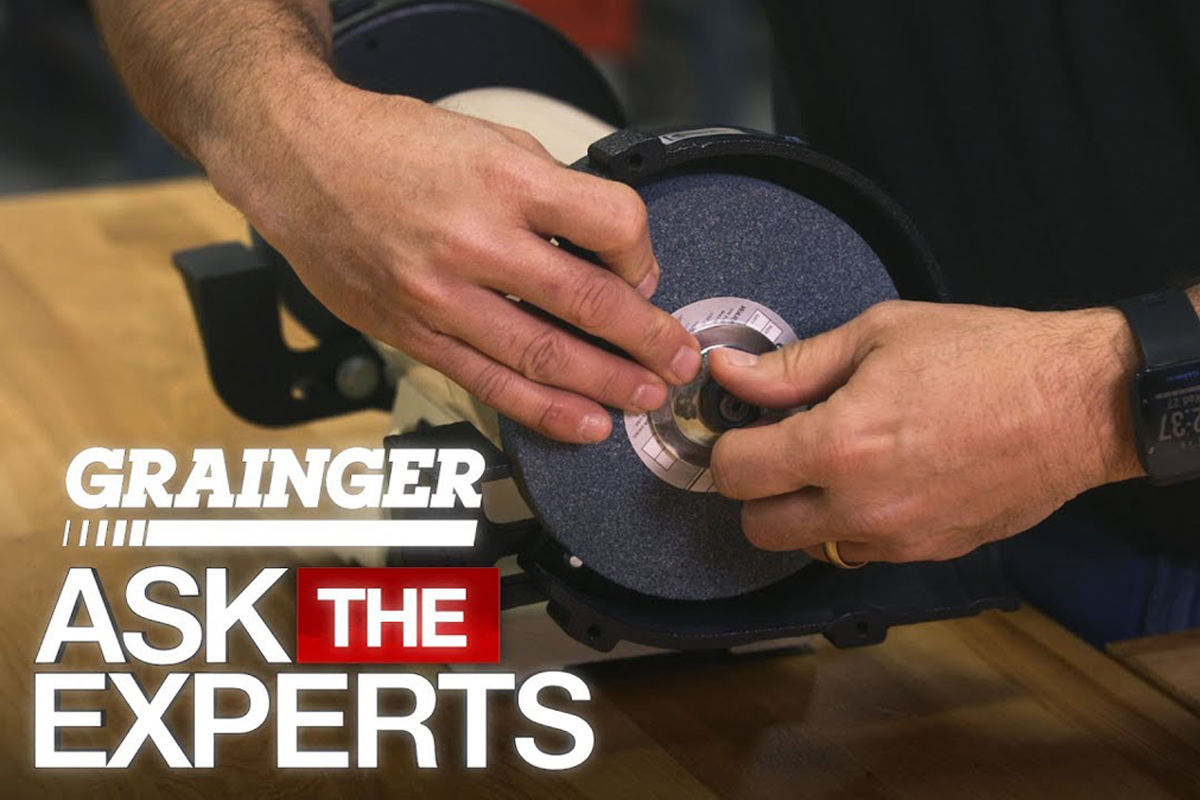

Ask the Experts: Surface Grinding Wheel Safety
By Grainger Editorial Staff 5/8/19
Hello and welcome to another edition of Grainger Ask The Experts.
Today we’re going to look at surface grinding wheel safety, and at how you can protect yourself and others from getting hurt when using these high-speed cutting tools.
One of the most common pieces of machinery used by machine shops, wheel grinders revolve at rates as high as 10,000 surface feet per minute. Because of this, special care must be taken when mounting, dressing, and using these cutting tools.
Before mounting a new wheel on a spindle, you should always “ring test” the wheel.
For a 6-inch surface grinding wheel, simply rest your finger at the arbor hole for leverage, and then tap the wheel lightly.You should hear a ringing sound. If you don’t, then the wheel may be cracked and in danger of exploding when brought up to RPM on the spindle. This is an old tool & die trick that has been practiced for many years.
When working with larger-diameter wheels, make sure the wheels are properly balanced on the hub before they’re mounted on the spindle. And, before you start using the surface grinder, trim newly-mounted wheels with a dresser that’s designated for that specific type of wheel.
Used to return a wheel to its original round shape, expose fresh grains for renewed cutting actionand/or make a different profile on the wheel's edge, diamond dressers are commonly used for silicon carbide and aluminum oxide wheels.
Diamond wheels require a brake-controlled truing device with an aluminum oxide truing wheel. These wheels normally feature grit in the 80 to 320 range.
Another common method for trimming a diamond wheel is to use a dressing stick, which is held to the wheel after it is mounted and running at RPM. To ensure best accuracy, any wheels that have been removed from the spindle should be dressed again once they’re remounted.
Thanks for watching this edition of Grainger: Ask The Experts.
The information contained in this article is intended for general information purposes only and is based on information available as of the initial date of publication. No representation is made that the information or references are complete or remain current. This article is not a substitute for review of current applicable government regulations, industry standards, or other standards specific to your business and/or activities and should not be construed as legal advice or opinion. Readers with specific questions should refer to the applicable standards or consult with an attorney.






